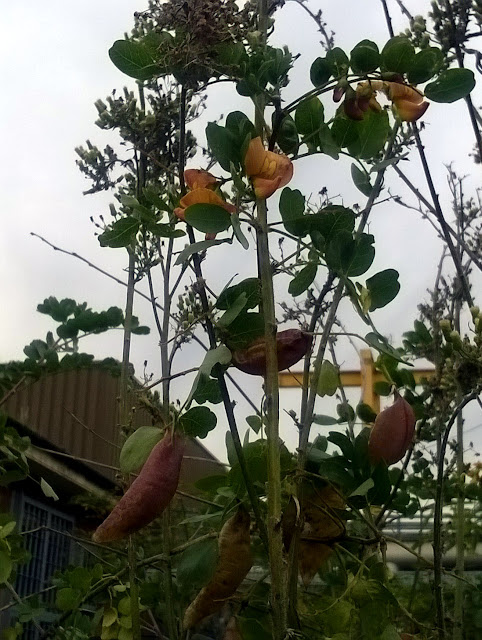Southern Dogwood (Cornus australis or Cornus sanguinea subsp. australis) is one good case in point, with the following map showing a rash of dots across central England. This species is almost ubiquitous in recent plantings in VC31, and is increasingly being found bird sown. A similar picture is building in VC64. My personal view is that this isn't a trivial matter. Southern Dogwood seems to grow more vigorously and forms a much denser bush, so I can see it being a problem for habitat managers in the future. It is obvious why horticulturists have favoured it as it has larger flowers and leaves than the native plant, produces a neater denser bush and has brilliant autumn colour.

The characters used in keys to distinguish it from Dogwood (Cornus sanguinea) are subtle and based on the number of leaf veins and the morphology of leaf hairs, but this belies the genuine differences between the two species. The leaf hair differences, visible with a hand lens, are well illustrated on the Manual of the Alien Plants of Belgium website. Once known the two species can usually be told at a glance with very high accuracy, but it always advisable to check the hairs. More recorders need to be looking for and distinguishing the two species if we are to have a representative picture of their true range in time for the next Atlas.
The typical large and rounded foliage of Southern Dogwood
The hybrid hawthorn Crataegus x subsphaerica is the subject of a separate post which can be found here. But I just wanted to show the current map of is distribution in VC63 and 64 following targeted searches this autumn. Note the two new locations well to the north of the Leeds cluster. It will be interesting to see how many new dots are added in 2017, I suspect it is going to prove very widespread and abundant.
What is interesting about my find at Moor Monkton (VC64) is that the original planted trees appear to have produced new trees much closer to Hawthorn (Crataegus monogyna) than the original stock. This suggests backcrossing, and this will add to identification difficulties in the future. Similar backcrossed bushes were found bird sown at Knostrop where there is a hedgerow dominated by the hybrid and estimated to be 30 years old. Clearly the hybrid has been with us for a while and has had plenty of time for birds to spread it around, so hybrids could potentially turn up anywhere.






.jpg)